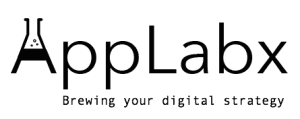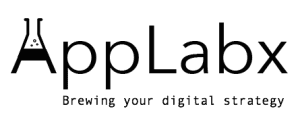Key Takeaways
- Discover 10 online business ideas for 2025 that require low capital and offer high scalability and profitability.
- Learn how to start businesses like dropshipping, affiliate marketing, and digital product sales with minimal investment.
- Leverage AI tools, automation, and global marketplaces to build sustainable income streams from anywhere in the world.
In an era where technology continues to evolve at an unprecedented pace, the landscape of online business in 2025 has become more dynamic, accessible, and profitable than ever before. The global shift toward remote work, digital commerce, and the gig economy has significantly lowered the barriers to entry for aspiring entrepreneurs. Today, starting a successful online business no longer requires massive investments or extensive infrastructure. With the right strategy, tools, and mindset, anyone can launch a thriving digital venture from virtually anywhere with minimal startup costs.

According to recent reports by Statista and Forbes, global e-commerce sales are expected to surpass $8 trillion by the end of 2025. Simultaneously, freelance marketplaces, online service platforms, and digital content consumption are witnessing exponential growth. Whether it is dropshipping, affiliate marketing, freelancing, or digital product sales, the opportunities for generating sustainable income online have never been greater.
The demand for online services is further driven by the increasing reliance of businesses on digital transformation. Small businesses, startups, and even large corporations are constantly seeking solutions to improve their digital presence, automate tasks, and engage with global audiences. This creates a massive opportunity for online entrepreneurs to step in and offer valuable services without needing a physical storefront or heavy investment.
Moreover, the proliferation of no-code tools, AI-powered platforms, and user-friendly marketplaces has made it easier than ever to set up and scale an online business. Entrepreneurs today can leverage platforms like Shopify, Etsy, Fiverr, and Teachable to start selling products or services almost instantly. These platforms often require little to no upfront investment beyond basic subscription fees, marketing, and perhaps some simple equipment or software.
One of the most attractive aspects of starting an online business in 2025 is the sheer flexibility it offers. You are not confined by location, time zones, or traditional 9-to-5 schedules. Whether you are looking to build a side hustle, transition to full-time entrepreneurship, or create multiple streams of passive income, the digital economy presents a wide array of options tailored to different skills, interests, and financial capacities.
Another key factor that makes online business highly appealing is scalability. Unlike traditional brick-and-mortar businesses that are limited by geographical constraints and operational overhead, online businesses can scale globally with minimal additional costs. This means a product or service you create today can reach customers across continents tomorrow.
However, with so many options available, choosing the right online business model can feel overwhelming, especially if you are working with limited capital. It is crucial to select a business idea that aligns not only with current market demand but also with your skills, passions, and long-term goals. Additionally, understanding the startup costs, earning potential, and scalability of each model can help you make an informed decision that minimizes risk and maximizes profitability.
This comprehensive guide aims to help you navigate through the clutter by showcasing the top 10 most profitable online business ideas you can start with low capital in 2025. Each business idea featured in this blog has been carefully selected based on market trends, growth potential, accessibility, and profitability. Whether you are a creative individual, a tech enthusiast, or someone with expertise in a particular niche, there is an opportunity here that fits your vision.
Throughout this guide, you will gain in-depth insights into how each business model works, the tools you need to get started, estimated startup costs, marketing strategies, and realistic earning potentials. You will also find practical examples, success stories, and a comparative analysis to help you identify which online business is best suited for your journey in 2025.
By the end of this article, you will be equipped with actionable knowledge and the confidence to launch your own profitable online business without breaking the bank. Whether your goal is to achieve financial independence, escape the corporate grind, or simply explore a new revenue stream, the digital economy holds limitless possibilities for those ready to take the leap.
So, if you are ready to turn your skills, creativity, or passion into a thriving online business, read on as we explore the most lucrative and accessible business opportunities available in 2025 — all requiring low startup capital but offering high growth potential.
But, before we venture further, we like to share who we are and what we do.
About AppLabx
From developing a solid marketing plan to creating compelling content, optimizing for search engines, leveraging social media, and utilizing paid advertising, AppLabx offers a comprehensive suite of digital marketing services designed to drive growth and profitability for your business.
AppLabx is well known for helping companies and startups create world-class Online Businesses.
At AppLabx, we understand that no two businesses are alike. That’s why we take a personalized approach to every project, working closely with our clients to understand their unique needs and goals, and developing customized strategies to help them achieve success.
If you need a digital consultation, then send in an inquiry here.
Top 10 Profitable Online Business Ideas You Can Start with Low Capital in 2025
- Dropshipping Business
- Print-on-Demand (POD)
- Affiliate Marketing
- Content Creation (YouTube, Blogging, Podcasting)
- Freelance Services
- Digital Marketing Agency
- Online Courses & Coaching
- E-commerce with Handmade or Digital Products
- Social Media Management & Consulting
- Virtual Assistant (VA) Services
1. Dropshipping Business
Dropshipping continues to be one of the most popular and profitable online business models in 2025, especially for entrepreneurs looking to start with low capital. This e-commerce model allows sellers to operate without holding any inventory, making it highly accessible, scalable, and low-risk.
What is Dropshipping?
- A retail fulfillment method where an online store sells products without keeping them in stock.
- When a customer places an order, the store purchases the product from a third-party supplier (usually a wholesaler or manufacturer) who ships it directly to the customer.
- The seller earns the difference between the wholesale price and the retail price.
Why Dropshipping is Profitable in 2025
- Low Startup Costs: No need for inventory or warehouse space.
- Global Market Access: Sell products worldwide from anywhere.
- Scalable Business Model: Easy to scale by adding new products or targeting different markets.
- Wide Range of Products: From fashion to electronics, the possibilities are vast.
- Automated Processes: Modern tools automate order processing, inventory updates, and customer management.
- Growing E-commerce Trends: With global e-commerce sales projected to hit over $8 trillion by 2025, the market is booming.
Best Niches for Dropshipping in 2025
- Sustainable Products: Eco-friendly items, reusable goods.
- Home Office Equipment: Standing desks, ergonomic chairs.
- Pet Supplies: Smart collars, pet toys, grooming kits.
- Fitness & Wellness: Portable gym equipment, yoga accessories.
- Tech Gadgets: Wireless chargers, smart home devices.
- AI-Powered Products: AI translation devices, AI toys.
- Digital Nomad Gear: Portable monitors, noise-canceling headphones.
Top Dropshipping Platforms and Tools
| Platform/Tool | Purpose | Pricing | Key Features |
|---|---|---|---|
| Shopify | E-commerce store | From $29/mo | Customizable store, apps integration |
| Oberlo (via DSers) | Product sourcing | Free/Paid | AliExpress product sourcing |
| Spocket | US/EU suppliers | From $39/mo | Faster shipping, branded invoicing |
| Printful | Print-on-demand | Free to use | Custom products like apparel, mugs |
| CJ Dropshipping | Supplier network | Free | Global warehouses, automated orders |
| Zendrop | US suppliers | From $49/mo | Fast delivery, branded packaging |
Step-by-Step Guide to Starting a Dropshipping Business in 2025
Step 1: Select a Profitable Niche
- Focus on trending, evergreen, or passion-driven products.
- Use Google Trends, TikTok trends, and tools like SaleHoo for research.
Step 2: Find Reliable Suppliers
- Platforms: Spocket, CJ Dropshipping, AliExpress via DSers.
- Vet suppliers for product quality, shipping times, and reviews.
Step 3: Build Your Online Store
- Use Shopify, WooCommerce, or Wix.
- Design user-friendly, responsive websites with high-quality images.
Step 4: Set Up Payment Gateways
- Options include Stripe, PayPal, and Shopify Payments.
Step 5: Implement Marketing Strategies
- Paid Ads: Facebook Ads, Instagram Ads, TikTok Ads, Google Shopping.
- SEO: Blog content, product descriptions, and backlink building.
- Social Media: TikTok marketing, Instagram Reels, YouTube Shorts.
- Email Marketing: Abandoned cart recovery, newsletters, promotions.
Step 6: Manage Orders and Customer Service
- Use automation tools to sync orders to suppliers.
- Offer 24/7 customer support via chatbots and email automation.
Dropshipping Costs Breakdown
| Expense Item | Estimated Cost (USD) |
|---|---|
| E-commerce Platform (Shopify) | $29 – $79 monthly |
| Domain Name | $10 – $15 yearly |
| Marketing (Ads) | $200 – $1,000 monthly |
| Apps & Automation Tools | $20 – $100 monthly |
| Branding (Logo, Theme) | $50 – $200 one-time |
| Total Initial Setup | $300 – $1,500 |
Profit Margins and Earning Potential
| Product Type | Cost Price (USD) | Sell Price (USD) | Profit Per Sale (USD) |
|---|---|---|---|
| Yoga Mat | $15 | $35 | $20 |
| Smart Pet Collar | $40 | $90 | $50 |
| Portable Monitor | $100 | $220 | $120 |
| Eco-Friendly Bottle | $8 | $22 | $14 |
- Average Profit Margins: 20% to 50%, depending on the product and niche.
- Monthly Income Potential: From $500 for beginners to $10,000+ for optimized stores.
Dropshipping Business Model Matrix
| Factor | Low Competition Niche | High Competition Niche |
|---|---|---|
| Startup Cost | Low | Medium |
| Marketing Cost | Low to Medium | High |
| Profit Margins | Higher | Moderate |
| Scaling Potential | Moderate | High |
| Risk Level | Lower | Higher |
Common Mistakes to Avoid
- Choosing saturated or declining niches.
- Ignoring customer service.
- Poor website design and slow loading speeds.
- Not testing multiple marketing strategies.
- Relying solely on one supplier without backups.
Successful Dropshipping Examples
- WarmlyDecor.com: Niche in modern home lighting. Scaled to $500K+ annually.
- GadgetSnug.com: Focused on portable tech gadgets for remote workers.
- EcoBuddyStore.com: Specializes in sustainable, eco-friendly products.
Is Dropshipping Still Worth It in 2025?
- Yes. With the right niche selection, supplier vetting, and marketing strategies, dropshipping remains a highly profitable and scalable business model in 2025.
- AI-powered tools, faster fulfillment networks, and improved customer experience solutions have made the model more sustainable and competitive than ever before.
2. Print-on-Demand (POD)
Print-on-Demand (POD) is one of the fastest-growing and most profitable online business models in 2025 for entrepreneurs with low startup capital. It enables you to sell customized products like t-shirts, mugs, phone cases, and wall art without holding any inventory. POD leverages automated printing and fulfillment services, allowing you to focus on design, branding, and marketing.
What is Print-on-Demand (POD)?
- An e-commerce model where products are manufactured only after a customer places an order.
- Products are printed with your custom designs and shipped directly to customers by third-party suppliers.
- Eliminates the need for inventory, warehousing, and upfront bulk purchases.
Why Print-on-Demand is Profitable in 2025
- Low Risk: No inventory costs; you only pay after a sale.
- High Customization: Sell unique, personalized products.
- Scalable: Add unlimited designs or product categories.
- Growing Consumer Demand: Rising interest in custom, eco-friendly, and niche designs.
- Global Reach: Sell worldwide through marketplaces or your own website.
- AI & Automation: Tools for automated design generation, mockups, and fulfillment.
Best Niches for POD in 2025
| Niche | Why It’s Profitable | Product Examples |
|---|---|---|
| Eco-Friendly Apparel | Growing sustainability movement | Organic cotton shirts, recycled bags |
| Pet Lovers | High demand for pet-themed products | Dog mugs, cat t-shirts, pet pillows |
| Motivational Quotes | Timeless and universal appeal | Wall art, notebooks, tote bags |
| AI & Tech Enthusiasts | Growing AI adoption | Tech humor shirts, coding mugs, AI posters |
| Fitness & Wellness | Expanding health-conscious audience | Workout shirts, yoga mats, water bottles |
| Digital Nomad Lifestyle | Remote work culture boom | Laptop sleeves, travel mugs, hoodies |
| Hobbies & Fandoms | Passion-driven consumers | Gaming posters, book quotes, movie-themed tees |
Top POD Platforms and Tools
| Platform | Function | Pricing | Features |
|---|---|---|---|
| Printful | POD & fulfillment | Free / Paid | Apparel, accessories, home decor; branded packaging |
| Printify | POD marketplace | Free / Premium | Large supplier network, competitive pricing |
| Gelato | Global POD fulfillment | Free / Paid | Local production in 30+ countries, eco-friendly |
| Redbubble | POD marketplace | Free | Marketplace with built-in customer base |
| Teespring | POD + marketing tools | Free | Direct social media integration (YouTube, TikTok, IG) |
| Canva | Design tool | Free / Pro | Easy drag-and-drop design creation |
| Placeit | Mockup & branding | Paid | Professional mockups, video templates, logo design |
Step-by-Step Guide to Starting a POD Business in 2025
1. Choose a Niche and Target Audience
- Select a niche with passionate buyers.
- Research trends using Google Trends, Etsy trends, and POD marketplaces.
- Focus on evergreen themes (pets, fitness) or trending topics (AI, sustainability).
2. Create Unique Designs
- Use tools like Canva, Photoshop, or AI design generators.
- Hire freelance designers from Fiverr or Upwork if needed.
- Ensure designs are high-resolution and suitable for multiple products.
3. Select the Right POD Platform
- Use Printful or Printify for store integration.
- Sell on marketplaces like Redbubble, TeePublic, or Zazzle for instant traffic.
4. Build Your Online Store
- Platforms: Shopify, Etsy, WooCommerce, or BigCommerce.
- Optimize your store with:
- High-quality product mockups
- SEO-optimized product descriptions
- Trust badges and customer reviews
5. Set Up Payment Gateways
- Use Shopify Payments, PayPal, or Stripe for secure payments.
6. Launch Marketing Campaigns
- Social Media Ads: TikTok Ads, Instagram Reels, Facebook Ads.
- Influencer Collaborations: Micro and nano-influencers in your niche.
- SEO: Blog posts, keyword-rich product descriptions, backlinks.
- Email Marketing: Launch sequences, promotions, abandoned cart recovery.
7. Automate Fulfillment
- Orders automatically sync to the POD supplier.
- Supplier handles printing, packaging, and shipping.
Cost Breakdown for POD in 2025
| Expense | Estimated Cost (USD) |
|---|---|
| E-commerce Platform (Shopify) | $29 – $79 monthly |
| Domain Name | $10 – $15 yearly |
| Design Tools (Canva/Placeit) | $12 – $30 monthly |
| Marketing (Ads) | $200 – $1,000 monthly |
| Product Samples (Optional) | $50 – $150 one-time |
| Branding (Logo, Theme) | $50 – $200 one-time |
| Total Initial Setup | $350 – $1,500 |
POD Product Profitability Table
| Product | Base Cost (USD) | Retail Price (USD) | Profit (USD) |
|---|---|---|---|
| T-shirt | $10 – $15 | $25 – $35 | $10 – $20 |
| Hoodie | $22 – $30 | $50 – $70 | $28 – $40 |
| Mug | $7 – $10 | $18 – $25 | $8 – $15 |
| Tote Bag | $10 – $14 | $25 – $35 | $11 – $21 |
| Canvas Wall Art | $25 – $40 | $60 – $100 | $35 – $60 |
| Phone Case | $8 – $12 | $20 – $30 | $10 – $18 |
POD Business Model Matrix
| Factor | Marketplace (Redbubble, Teepublic) | Own Store (Shopify, WooCommerce) |
|---|---|---|
| Startup Cost | Low | Medium |
| Traffic Source | Organic (Built-in) | Paid ads + SEO |
| Branding Control | Limited | Full |
| Profit Margins | Lower | Higher |
| Scaling Potential | Moderate | High |
| Marketing Requirements | Low | High |
| Customer Ownership | No | Yes |
Revenue vs. Ad Spend Chart
| Ad Spend (USD) | Expected Revenue (USD) |
|---|---|
| $200 | $800 – $1,500 |
| $500 | $2,000 – $4,000 |
| $1,000 | $4,500 – $9,000 |
| $2,000+ | $10,000+ |
Note: Results depend on niche demand, design appeal, and ad optimization.
Common Mistakes to Avoid
- Using generic, unoriginal designs.
- Ignoring quality control (order samples before scaling).
- Poor website design and user experience.
- Underpricing products and killing profit margins.
- Failing to test different marketing channels.
Successful POD Business Examples
- InspireUplift: Focused on home decor and personalized gifts.
- PawfectPrints: Niche in pet-themed apparel and accessories.
- NomadicGear: Specializes in designs for digital nomads and travelers.
- AIArtStore: Offers AI-generated art prints, posters, and merchandise.
Is POD Still Worth It in 2025?
- Absolutely. With the rise of personalization, sustainability, and niche-driven consumer behavior, POD remains one of the most viable, low-risk online business models.
- The combination of AI-powered design tools, automated fulfillment, and global marketplaces makes it easier than ever to succeed in POD.
3. Affiliate Marketing
Affiliate marketing is one of the most profitable and beginner-friendly online business models in 2025. It allows individuals to earn commissions by promoting other companies’ products or services. With no need for inventory, customer service, or product creation, affiliate marketing offers a highly scalable, low-risk, and flexible income stream.
What is Affiliate Marketing?
- A performance-based marketing model where affiliates earn commissions for driving sales, leads, or traffic to a merchant’s website.
- Affiliates promote products via websites, blogs, YouTube, social media, or email marketing.
- When a user clicks on an affiliate link and completes a desired action (like a purchase), the affiliate earns a commission.
Why Affiliate Marketing is Profitable in 2025
- Low Startup Costs: No need to create products or handle fulfillment.
- High Scalability: Promote multiple products or brands simultaneously.
- Passive Income Potential: Earn commissions even while sleeping.
- Exploding Digital Economy: Increased reliance on online product recommendations and influencer marketing.
- Diverse Niches Available: From AI software to health supplements, affiliate opportunities are endless.
- AI-Driven Marketing: Use AI for content generation, SEO, and personalized ad targeting.
Best Niches for Affiliate Marketing in 2025
| Niche | Why It’s Profitable | Examples of Affiliate Products |
|---|---|---|
| AI Tools & SaaS | SaaS subscriptions offer recurring commissions | Jasper AI, Surfer SEO, Grammarly |
| Finance & Investing | High-ticket and recurring commissions | Trading platforms, investment apps, courses |
| Health & Wellness | Evergreen demand | Supplements, fitness apps, online programs |
| E-commerce Tools | Growth of online businesses | Shopify, Wix, SEMrush |
| Tech & Gadgets | Constant consumer demand for electronics | Amazon, BestBuy, Gearbest |
| Travel & Digital Nomads | Return of global travel in 2025 | Airbnb, Booking.com, travel insurance |
| Green & Sustainable | Rising eco-conscious consumers | Eco-products, sustainable fashion |
Top Affiliate Networks and Programs
| Network/Program | Commission Rate | Cookie Duration | Focus Industry |
|---|---|---|---|
| Amazon Associates | 1% – 10% | 24 hours | Physical products |
| Impact | 5% – 30% | Varies (30-90 days) | SaaS, finance, retail |
| ShareASale | 5% – 50% | 30 – 120 days | Fashion, home, finance |
| ClickBank | 30% – 70% | 60 days | Digital products, courses |
| CJ Affiliate | 5% – 25% | Varies | E-commerce, finance, tech |
| PartnerStack | 10% – 50% + recurring | 30 – 90 days | SaaS, B2B software |
| Digistore24 | Up to 70% | 180 days | Digital products, software |
Step-by-Step Guide to Starting an Affiliate Marketing Business in 2025
1. Choose a Profitable Niche
- Focus on industries with high demand and buyer intent.
- Check competition, commission rates, and audience size.
- Use Google Trends, Ahrefs, and SEMrush for validation.
2. Select Affiliate Programs
- Join networks like Impact, ShareASale, CJ Affiliate, or PartnerStack.
- Look for:
- High commission rates
- Recurring commissions (ideal for SaaS products)
- Long cookie durations
3. Build an Affiliate Website or Platform
- Platforms: WordPress, Wix, Shopify (for blog stores).
- Create:
- SEO-optimized blog posts
- Product comparison pages
- Review articles
- How-to guides
4. Drive Traffic to Your Affiliate Links
- SEO: Keyword research, content optimization, backlink building.
- Social Media: TikTok, YouTube, Instagram, Pinterest.
- Paid Advertising: Google Ads, Facebook Ads, native ads.
- Email Marketing: Build an email list using lead magnets and nurture sequences.
5. Optimize for Conversions
- Use Clear Calls to Action (CTAs) on all content.
- Add product comparison tables, pros/cons sections, and real user testimonials.
- Implement A/B testing for landing pages.
6. Scale the Business
- Repurpose content across multiple platforms (blog, YouTube, TikTok).
- Outsource content writing or video creation.
- Build backlinks to improve SEO rankings.
Cost Breakdown for Affiliate Marketing in 2025
| Expense | Cost Range (USD) |
|---|---|
| Website Hosting (e.g., Bluehost) | $50 – $120 yearly |
| Domain Name | $10 – $15 yearly |
| SEO Tools (Ahrefs/SEMrush) | $100 – $200 monthly |
| Content Creation (Optional) | $50 – $500 monthly |
| Email Marketing Tools | $20 – $100 monthly |
| Ads (Optional) | $200 – $2,000 monthly |
| Total Initial Setup | $200 – $1,500+ |
Affiliate Marketing Income Potential
| Traffic Level | Estimated Monthly Earnings (USD) |
|---|---|
| 500 visitors/day | $500 – $2,000 |
| 1,000 visitors/day | $2,000 – $6,000 |
| 5,000 visitors/day | $6,000 – $20,000+ |
| 10,000 visitors/day | $20,000+ |
Note: Earnings depend on niche, conversion rates, and commission structure.
Affiliate Program Model Matrix
| Program Type | One-Time Commission | Recurring Commission | High Ticket (>$500) |
|---|---|---|---|
| Amazon Associates | ✔️ | ||
| SaaS (e.g., Jasper) | ✔️ | ✔️ | |
| Digital Products | ✔️ | ✔️ | |
| Finance/Investing | ✔️ | ✔️ | ✔️ |
| Travel Affiliates | ✔️ | ✔️ |
Revenue vs. Content Output Chart
| Content Pieces Published | Expected Monthly Traffic | Projected Monthly Revenue (USD) |
|---|---|---|
| 10 | 500 | $500 – $1,500 |
| 30 | 2,000 | $2,000 – $6,000 |
| 60 | 5,000 | $6,000 – $15,000 |
| 100+ | 10,000+ | $20,000+ |
Common Mistakes to Avoid in Affiliate Marketing
- Choosing low-paying or low-converting programs.
- Focusing only on short-term trends rather than evergreen content.
- Not investing in SEO or ignoring keyword research.
- Spamming affiliate links without adding value.
- Overlooking audience trust by promoting poor-quality products.
Successful Affiliate Marketing Examples
- The Wirecutter (Acquired by The New York Times): Product review site generating millions in affiliate commissions.
- Smart Passive Income by Pat Flynn: Affiliate marketing combined with online education.
- Nomadic Matt: Travel blog earning through booking platforms and travel affiliate programs.
- Adam Enfroy: Scaled a blogging affiliate business from $0 to $80K+ monthly in under 2 years.
Is Affiliate Marketing Still Worth It in 2025?
- Absolutely. With the continued growth of online commerce, AI tools, and content platforms, affiliate marketing remains one of the most lucrative online business models.
- Key success factors include choosing high-converting offers, leveraging SEO, using multiple traffic sources, and focusing on valuable, trust-building content.
4. Content Creation (YouTube, Blogging, Podcasting)
Content creation has become one of the most profitable and scalable online business models in 2025. Platforms like YouTube, personal blogs, and podcasts enable creators to monetize their expertise, entertainment, and value-driven content. With the rise of the creator economy, individuals can now turn their passions into sustainable income streams with relatively low startup costs.
What is Content Creation?
- The process of producing and distributing value-driven content across digital platforms like YouTube, blogs, and podcasts.
- Monetization occurs through ads, sponsorships, affiliate marketing, merchandise, premium content, and crowdfunding.
- Scalable with the potential for passive income and global reach.
Why Content Creation is Profitable in 2025
- Low Startup Costs: Minimal upfront investment needed for equipment and hosting.
- Multiple Income Streams: Ad revenue, sponsorships, affiliate marketing, memberships, merchandise, and courses.
- Exponential Reach: One piece of content can reach millions over time.
- Growing Creator Economy: Valued at over $250 billion globally in 2025.
- Flexibility: Create content based on personal passion, skills, or expertise.
- Long-Term Passive Income: Content generates views and revenue for years.
Comparison of Content Platforms
| Platform | Primary Format | Monetization Methods | Startup Cost | Time to Monetize | Traffic Source |
|---|---|---|---|---|---|
| YouTube | Video | Ads, sponsors, merch, affiliates, memberships | Low | 3-6 months (avg) | YouTube search, suggested |
| Blogging | Text/SEO | Ads, affiliates, sponsors, digital products | Low | 6-12 months (avg) | Google, Pinterest, social |
| Podcasting | Audio | Sponsors, premium episodes, merch, donations | Low-Medium | 6-9 months (avg) | Podcast directories, social |
Best Niches for Content Creation in 2025
| Niche | Platform Suitability | Why It’s Profitable |
|---|---|---|
| AI & Tech | YouTube, Blogging, Podcasting | Growing AI interest globally |
| Personal Finance | YouTube, Blogging, Podcasting | High-paying sponsors and affiliate programs |
| Health & Wellness | YouTube, Blogging | Huge evergreen demand |
| Gaming | YouTube, Podcasting | Massive global gaming community |
| Digital Nomad Life | YouTube, Blogging | Rising remote work trends |
| Self-Development | All Platforms | Growing interest in productivity and mindset |
| Business & Marketing | YouTube, Blogging, Podcasting | High CPM (Cost per Thousand Impressions) rates |
Step-by-Step Guide to Starting a Content Creation Business in 2025
1. Choose Your Niche and Platform
- Select a niche aligned with your passion, expertise, and market demand.
- Choose the platform that matches your content style:
- YouTube: Visual and entertaining or educational.
- Blogging: Written guides, tutorials, evergreen articles.
- Podcasting: Conversational, interviews, long-form discussions.
2. Set Up Your Platform
- YouTube: Create a channel, design branding (banner, logo), optimize channel description.
- Blog: Build with WordPress, Wix, or Squarespace; select an SEO-optimized theme.
- Podcast: Use hosting platforms like Buzzsprout, Anchor, or Podbean.
3. Create High-Quality Content
- Focus on solving problems, educating, entertaining, or inspiring.
- Use AI tools like ChatGPT, Descript, Canva, and Jasper for assistance.
- Maintain consistency: Upload weekly or bi-weekly.
4. Grow Your Audience
- SEO: Optimize titles, descriptions, tags, and keywords.
- Social Media: Promote on Instagram, TikTok, LinkedIn, and Twitter.
- Collaborations: Partner with other creators, appear on podcasts, or cross-promote on blogs.
5. Monetize Your Content
- Ad Revenue: YouTube Partner Program, Google AdSense (for blogs), podcast ads.
- Affiliate Marketing: Recommend products or services and earn commissions.
- Sponsorships: Partner with brands relevant to your audience.
- Merchandise: Sell branded products via Printful, TeeSpring, or Spreadshirt.
- Courses/Digital Products: Offer eBooks, online courses, or membership communities.
- Crowdfunding: Use Patreon, Ko-fi, or Buy Me a Coffee.
Cost Breakdown for Content Creation in 2025
| Expense | Cost Range (USD) |
|---|---|
| Equipment (Camera, Mic, Lights) | $150 – $800 one-time |
| Website Hosting (for Blog) | $50 – $150 yearly |
| Podcast Hosting | $10 – $30 monthly |
| Video/Audio Editing Software | $0 – $50 monthly |
| Graphic Design Tools (Canva Pro) | $12 monthly |
| Marketing (Ads – Optional) | $100 – $500 monthly |
| Total Initial Setup | $200 – $1,500 |
Income Potential for Content Creators
| Platform | Traffic/Views per Month | Estimated Monthly Earnings (USD) |
|---|---|---|
| YouTube | 50,000 | $500 – $2,500 |
| 100,000 | $2,500 – $5,000 | |
| 500,000 | $5,000 – $20,000+ | |
| Blog | 10,000 | $500 – $1,500 |
| 50,000 | $1,500 – $5,000 | |
| 100,000 | $5,000 – $15,000+ | |
| Podcast | 5,000 downloads | $500 – $1,500 |
| 20,000 downloads | $2,000 – $6,000 | |
| 50,000 downloads | $6,000 – $15,000+ |
Note: Income includes ads, sponsorships, affiliate commissions, and products.
Monetization Model Matrix
| Platform | Ads | Sponsorships | Affiliates | Merchandise | Courses/Products | Crowdfunding |
|---|---|---|---|---|---|---|
| YouTube | ✔️ | ✔️ | ✔️ | ✔️ | ✔️ | ✔️ |
| Blog | ✔️ | ✔️ | ✔️ | ✔️ | ✔️ | ✔️ |
| Podcast | ✔️ | ✔️ | ✔️ | ✔️ | ✔️ | ✔️ |
Revenue vs. Content Output Chart
| Number of Videos/Posts/Episodes Published | Estimated Monthly Revenue (USD) |
|---|---|
| 10 | $500 – $1,000 |
| 30 | $1,500 – $4,000 |
| 60 | $4,000 – $10,000 |
| 100+ | $10,000+ |
Common Mistakes to Avoid in Content Creation
- Prioritizing quantity over quality.
- Inconsistent posting schedule.
- Poor audio/video quality or website design.
- Ignoring SEO optimization for discoverability.
- Not engaging with the audience via comments or social media.
- Focusing only on one monetization method rather than diversifying.
Successful Content Creation Examples
- MKBHD (Marques Brownlee): Tech YouTuber with millions in ad revenue, sponsorships, and merchandise.
- Neil Patel: SEO expert with a high-traffic blog generating income from consulting, courses, and affiliates.
- The Tim Ferriss Show: One of the most downloaded business podcasts globally, with high-ticket sponsors and premium content.
- Ali Abdaal: Former doctor turned productivity YouTuber, earning from courses, affiliate marketing, sponsorships, and ads.
Is Content Creation Still Worth It in 2025?
- Yes, it remains one of the most powerful and profitable ways to build an online business.
- The combination of evergreen content, diversified income streams, growing global audiences, and AI-powered production tools makes content creation a scalable and sustainable online business model in 2025.
5. Freelance Services
Freelancing is one of the most accessible and profitable online business models in 2025. It empowers individuals to monetize their skills by offering services directly to clients worldwide. With the rise of remote work, the gig economy, and AI-powered productivity tools, freelancers are thriving more than ever before.
What is Freelance Services?
- A self-employed business model where individuals offer specialized services to clients or businesses on a project, hourly, or retainer basis.
- Services can range from writing, graphic design, web development, digital marketing, consulting, and more.
- Clients can be sourced via freelance marketplaces, personal websites, or professional networks.
Why Freelancing is Profitable in 2025
- Low Startup Costs: No need for physical offices or large investments.
- High Demand: Businesses increasingly outsource to save costs.
- Location Independence: Work from anywhere globally.
- Flexible Income: Control over pricing, workload, and clients.
- Growing Gig Economy: Expected to surpass $500 billion globally by 2025.
- AI-Enhanced Productivity: Use AI to increase efficiency and output.
Most Profitable Freelance Niches in 2025
| Freelance Niche | Why It’s Profitable | Example Services |
|---|---|---|
| Graphic Design | High demand for branding and marketing assets | Logo design, social media graphics, UI/UX |
| Copywriting & Content | SEO-driven and AI-enhanced demand | Blog writing, ad copy, website content |
| Digital Marketing | Businesses seeking growth | SEO, PPC, social media management |
| Web Development | Rise of e-commerce and online presence | Website creation, app development, Shopify |
| Video Editing | Content explosion across YouTube and TikTok | Short-form video, YouTube editing, animations |
| Virtual Assistance | Admin tasks for entrepreneurs and businesses | Email management, data entry, scheduling |
| AI & Automation Setup | Surge in AI adoption across industries | AI chatbot setup, Zapier automations, APIs |
Top Platforms to Find Freelance Work
| Platform | Focus Industry | Commission Fee | Highlights |
|---|---|---|---|
| Upwork | General freelancing | 10% | Long-term contracts, high-value clients |
| Fiverr | Creative & technical gigs | 20% | Fast-paced, gig-based work |
| Freelancer.com | General freelancing | 10% | Competitive bidding model |
| Toptal | Tech & finance professionals | None (invite only) | High-paying clients, strict vetting |
| PeoplePerHour | Marketing & design | 20% | Hourly or fixed projects |
| Guru | General freelancing | 5% – 9% | Workroom collaboration tools |
| Contra | Commission-free freelancing | 0% | Full earnings go to freelancers |
Step-by-Step Guide to Starting a Freelance Business in 2025
1. Select Your Service Niche
- Identify skills you excel in (e.g., writing, design, coding, consulting).
- Validate demand via Upwork job postings, Fiverr gigs, or Google Trends.
- Niche down for higher rates (e.g., instead of “writer,” become a “SaaS copywriter”).
2. Build an Online Portfolio
- Use platforms like Behance, Dribbble, or a personal website via Wix or WordPress.
- Showcase:
- Past work samples
- Case studies
- Client testimonials
3. Set Up Freelance Profiles
- Create optimized profiles on Upwork, Fiverr, Toptal, etc.
- Include:
- Professional photo
- Compelling bio with keywords
- Detailed service descriptions
4. Price Your Services
- Charge based on:
- Value delivered
- Market rates
- Experience level
- Models:
- Hourly ($25–$150+ depending on skill)
- Fixed-price per project
- Monthly retainers for ongoing work
5. Find and Pitch Clients
- Apply to freelance job listings daily.
- Leverage LinkedIn outreach, cold emails, or networking groups.
- Create lead funnels via your website or Instagram/TikTok business accounts.
6. Deliver Exceptional Work
- Meet deadlines and exceed expectations.
- Offer revisions where necessary.
- Build long-term client relationships.
7. Scale Your Freelance Business
- Raise rates as demand grows.
- Outsource parts of your workflow to virtual assistants or subcontractors.
- Transition into an agency model if desired.
Cost Breakdown for Freelance Services in 2025
| Expense | Cost Range (USD) |
|---|---|
| Website/Portfolio Hosting | $50 – $150 yearly |
| Design/Editing Software | $12 – $50 monthly |
| Marketing (Ads – Optional) | $50 – $500 monthly |
| Freelancer Platform Fees | 5% – 20% per project |
| Productivity Tools (Notion, Zapier) | $10 – $40 monthly |
| Branding (Logo, Portfolio) | $50 – $200 one-time |
| Total Initial Setup | $200 – $1,000 |
Freelance Income Potential in 2025
| Skill Level | Hourly Rate (USD) | Monthly Income (Est.) |
|---|---|---|
| Beginner | $15 – $35 | $1,500 – $3,500 |
| Intermediate | $35 – $70 | $3,500 – $7,000 |
| Expert | $70 – $150+ | $7,000 – $15,000+ |
| Agency Model | Project-based | $15,000 – $50,000+ |
Freelance Services Model Matrix
| Model | Pros | Cons |
|---|---|---|
| Hourly | Simple, transparent | Income capped by time |
| Fixed Project | Predictable for both parties | Scope creep if not managed |
| Retainer | Recurring, stable income | Requires client commitment |
| Value-Based Pricing | High earning potential | Requires strong negotiation skills |
| Agency Scaling | Scale income beyond personal workload | Requires hiring and operations setup |
Revenue vs. Client Workload Chart
| Number of Active Clients | Monthly Revenue (USD) |
|---|---|
| 2 | $2,000 – $4,000 |
| 5 | $5,000 – $10,000 |
| 10 | $10,000 – $20,000 |
| 15+ | $20,000+ (Agency Model) |
Common Mistakes to Avoid in Freelancing
- Underpricing services leading to burnout.
- Not using contracts to protect both parties.
- Taking on clients outside your niche.
- Failing to set clear project scopes and deadlines.
- Ignoring self-promotion and relying solely on platforms.
Successful Freelance Business Examples
- Danny Margulies (Freelance Copywriter): Grew income to over six figures via Upwork.
- Jacob Cass (Logo Designer): Runs Just Creative, offering global freelance branding services.
- Latasha James: Digital marketing freelancer turned online educator with courses and consulting.
- Paul Jarvis: Freelance web designer who scaled into creating successful SaaS products like Fathom Analytics.
Is Freelancing Still Worth It in 2025?
- Absolutely. The combination of global remote work trends, rising demand for digital services, and the availability of AI tools makes freelancing one of the most reliable and profitable online business models.
- Success depends on specializing, delivering exceptional quality, leveraging multiple client acquisition channels, and continuously upgrading skills.
6. Digital Marketing Agency
Launching a digital marketing agency in 2025 is one of the most profitable online business opportunities, offering high scalability, recurring revenue, and global client access. With the continuous growth of online businesses and the increasing importance of digital presence, companies are heavily investing in digital marketing services.
What is a Digital Marketing Agency?
- A service-based business that helps companies grow online by offering various digital marketing solutions.
- Services typically include SEO, paid advertising (PPC), social media marketing, content marketing, email marketing, and website optimization.
- Agencies work with clients on monthly retainers, project-based fees, or performance-based contracts.
Why Digital Marketing Agencies Are Profitable in 2025
- Exploding Demand: Over 80% of businesses invest in digital marketing, a number growing annually.
- Recurring Revenue: Most clients pay on a monthly retainer basis.
- Scalable: Hire remote teams and automate processes.
- High-Profit Margins: Service-based, minimal overhead.
- Remote Flexibility: Operate globally without physical offices.
- AI-Powered Tools: Increased efficiency and automation in reporting, ad optimization, and content creation.
Most Profitable Digital Marketing Niches in 2025
| Niche | Why It’s Profitable | Examples of Clients |
|---|---|---|
| E-commerce | Explosive growth in online shopping | Shopify stores, Etsy shops, Amazon sellers |
| Local Businesses | Need for local SEO and social media | Restaurants, gyms, salons, clinics |
| SaaS & Tech Companies | High LTV customers, scalable needs | SaaS startups, AI tools, B2B tech firms |
| Health & Wellness | Evergreen demand, high client retention | Gyms, wellness coaches, nutritionists |
| Finance & Crypto | High-ticket clients, complex services | Investment firms, crypto exchanges |
| Real Estate | High commission value per client lead | Agents, brokers, property managers |
| Online Education | Growing demand for e-learning platforms | Coaches, online course creators |
Digital Marketing Agency Service Matrix
| Service | Demand Level | Average Monthly Fee (USD) | Profit Margin |
|---|---|---|---|
| SEO | High | $1,500 – $5,000+ | 70% – 85% |
| Pay-Per-Click (PPC) Ads | High | $1,000 – $10,000+ | 60% – 75% |
| Social Media Management | Very High | $500 – $4,000+ | 70% – 90% |
| Content Marketing | High | $1,000 – $6,000+ | 70% – 85% |
| Email Marketing | Medium | $500 – $3,000+ | 70% – 90% |
| Conversion Rate Optimization (CRO) | Medium | $1,000 – $5,000+ | 70% – 85% |
| Web Development & Design | Medium | $1,500 – $10,000+ (project) | 50% – 70% |
Top Platforms & Tools for Digital Marketing Agencies
| Tool | Category | Functionality |
|---|---|---|
| SEMrush | SEO | Keyword research, competitor analysis |
| Ahrefs | SEO | Backlink analysis, site audits |
| Google Ads | PPC | Paid search campaigns |
| Facebook Ads | PPC/Social | Meta advertising |
| Canva Pro | Design | Social media content creation |
| Zapier | Automation | Connect apps and automate workflows |
| Slack | Communication | Team and client communication |
| Notion | Project Management | Task management and collaboration |
| ClickUp | Project Management | Workflow and project tracking |
| HubSpot | CRM/Marketing | Client management, email marketing, CRM |
Step-by-Step Guide to Starting a Digital Marketing Agency in 2025
1. Define Your Niche and Services
- Focus on a niche to stand out and command premium pricing.
- Choose services based on expertise or outsource areas outside your skill set.
2. Set Up Your Business Legally
- Register your business (LLC or equivalent in your country).
- Create contracts and service agreements.
- Set up accounting and invoicing tools like QuickBooks or Wave.
3. Build Your Agency Website
- Platforms: WordPress, Webflow, Wix.
- Must include:
- Service pages
- Case studies
- Client testimonials
- Contact forms
- SEO-optimized content
4. Develop an Irresistible Offer
- Packages: Starter, Growth, and Enterprise.
- Example:
- Starter: SEO Audit + Basic Social Media Management
- Growth: SEO + PPC + Social Media + Monthly Reporting
- Enterprise: Full-service marketing + Strategy Consulting
5. Acquire Clients
- Outbound: Cold emails, LinkedIn outreach, networking events.
- Inbound: SEO, content marketing, lead magnets, webinars.
- Freelance Platforms: Start on Upwork, Fiverr Pro, or Toptal for initial clients.
6. Deliver and Scale Services
- Use automation tools for reporting, lead tracking, and communication.
- Hire freelancers or full-time remote staff as demand grows.
- Systematize processes with SOPs (Standard Operating Procedures).
Cost Breakdown for Running a Digital Marketing Agency
| Expense | Cost Range (USD) |
|---|---|
| Website Development | $200 – $1,000 |
| Software & Tools (SEO, CRM) | $200 – $800 monthly |
| Advertising (Lead Gen) | $300 – $2,000 monthly |
| Outsourcing/Freelancers | $500 – $5,000 monthly |
| Branding (Logo, Design, Assets) | $100 – $500 one-time |
| Legal & Admin | $100 – $500 yearly |
| Total Initial Setup | $1,000 – $5,000+ |
Income Potential for a Digital Marketing Agency
| Number of Clients | Average Client Fee (USD/Month) | Monthly Revenue (USD) | Annual Revenue (USD) |
|---|---|---|---|
| 3 | $2,000 | $6,000 | $72,000 |
| 5 | $3,500 | $17,500 | $210,000 |
| 10 | $5,000 | $50,000 | $600,000 |
| 20+ | $6,000+ | $120,000+ | $1,440,000+ |
Digital Marketing Agency Business Model Matrix
| Model | Pros | Cons |
|---|---|---|
| Monthly Retainer | Recurring revenue, predictable income | Requires ongoing service delivery |
| Project-Based | Higher upfront payments | Less predictable, requires constant sales |
| Performance-Based | High earnings potential | Riskier, depends on client success |
| Hybrid (Retainer + Bonus) | Stable + incentive for high performance | Requires complex tracking and agreements |
Revenue vs. Client Growth Chart
| Clients | Monthly Revenue (USD) | Profit Margin |
|---|---|---|
| 3 | $6,000 | 60% – 75% |
| 5 | $17,500 | 65% – 80% |
| 10 | $50,000 | 70% – 85% |
| 20+ | $120,000+ | 75% – 90% |
Common Mistakes to Avoid in Running a Digital Marketing Agency
- Offering too many services without specialization.
- Failing to create clear deliverables and client expectations.
- Underpricing services to win clients, leading to burnout.
- Not having proper contracts or legal protection.
- Poor project management leading to missed deadlines.
- Neglecting your own agency’s marketing while serving clients.
Successful Digital Marketing Agency Examples
- Neil Patel Digital: SEO-focused global agency serving Fortune 500 clients.
- AppLabx: A leading AI-driven digital marketing and SEO agency in Asia.
- Lyfe Marketing: Specializes in social media management for small businesses.
- Taktical: Focuses on performance marketing for startups and DTC brands.
- SociallyIn: Provides creative social media strategies for brands globally.
Is Running a Digital Marketing Agency Still Worth It in 2025?
- Yes, more than ever. With businesses worldwide shifting budgets towards online marketing, agencies providing SEO, paid media, and AI-powered solutions are thriving.
- Success hinges on choosing a niche, offering clear value, systematizing operations, and delivering measurable results.
7. Online Courses & Coaching
The online education and coaching industry has exploded in 2025, offering one of the most scalable and profitable online business models. Entrepreneurs, educators, and industry experts can monetize their knowledge by offering digital courses, workshops, coaching programs, or mentorship to a global audience.
What is Online Courses & Coaching?
- A knowledge-based business where individuals sell educational content, training, or mentorship.
- Formats include pre-recorded courses, live workshops, one-on-one coaching, and group coaching.
- Delivered via learning management systems (LMS), webinars, private communities, or video conferencing platforms.
Why Online Courses & Coaching Are Profitable in 2025
- High Demand: The global e-learning market is projected to exceed $650 billion by 2027.
- Scalable Income: Sell the same course to unlimited students without additional costs.
- Low Overhead: No need for physical space or inventory.
- Global Reach: Access to a worldwide audience regardless of location.
- Passive & Active Income Models: Courses can generate passive income, while coaching offers high-ticket active income.
- AI-Powered Tools: Simplify course creation, marketing, and customer management.
Most Profitable Niches for Online Courses & Coaching in 2025
| Niche | Why It’s Profitable | Popular Course/Coaching Examples |
|---|---|---|
| Business & Entrepreneurship | Always in demand for income growth | How to Start a Business, Scaling Startups |
| Personal Finance | People seeking financial freedom | Investing, Crypto Trading, Budgeting |
| Health & Fitness | Evergreen, global appeal | Fitness Coaching, Yoga, Nutrition, Mental Wellness |
| Technology & AI | Rapidly growing tech landscape | AI Tools, Software Development, Web Design |
| Digital Marketing | Rising demand for online presence | SEO Mastery, Facebook Ads, Influencer Growth |
| Career Development | Job seekers and professionals | Resume Writing, Interview Coaching, LinkedIn Mastery |
| Self-Improvement | Growing focus on personal growth | Productivity, Mindset, Time Management |
| Creative Skills | Monetize hobbies and talents | Photography, Music, Painting, Writing |
Online Courses vs. Coaching: Business Model Matrix
| Model | Delivery | Scalability | Price Range (USD) | Time Commitment |
|---|---|---|---|---|
| Pre-recorded Courses | Self-paced video | High | $50 – $2,000 | Low (after creation) |
| Group Coaching Programs | Live + group calls | Medium | $500 – $5,000 | Moderate |
| One-on-One Coaching | Live 1:1 sessions | Low | $1,000 – $10,000+ | High |
| Membership/Subscriptions | Ongoing community + content | Medium | $20 – $500/month | Moderate |
Top Platforms for Hosting Courses & Coaching
| Platform | Best For | Features | Fee Model |
|---|---|---|---|
| Teachable | Online Courses | Course builder, quizzes, payment gateways | Transaction or monthly |
| Kajabi | Courses + Membership + Coaching | All-in-one marketing + CRM | Monthly subscription |
| Thinkific | Online Courses | Drag-and-drop builder, certificates | Free + Paid plans |
| Podia | Courses + Digital Downloads | Simple, no transaction fees | Monthly subscription |
| Zoom | Live Coaching & Workshops | Video calls, webinars | Monthly subscription |
| Circle | Coaching Communities | Community, group coaching, memberships | Monthly subscription |
| Udemy | Marketplace Courses | Massive audience reach | Revenue share |
Step-by-Step Guide to Starting an Online Courses & Coaching Business in 2025
1. Choose Your Niche and Offer
- Select a profitable and in-demand topic.
- Validate demand using Google Trends, YouTube, and Reddit.
- Define your ideal student or client avatar.
2. Develop Your Curriculum
- Outline clear learning objectives.
- Break content into modules or lessons.
- Include videos, worksheets, quizzes, and assignments.
3. Record and Produce Content
- Equipment needed:
- HD webcam or DSLR
- Microphone (e.g., Blue Yeti or Rode)
- Lighting setup (ring light or softboxes)
- Tools for editing: Camtasia, Final Cut Pro, Descript, Canva.
4. Choose a Hosting Platform
- Select based on:
- Course complexity
- Payment options
- Marketing features (email, landing pages)
- Scalability
5. Set Pricing Strategy
- Consider value-based pricing.
- Offer:
- One-time payments
- Payment plans
- Subscriptions
- Use pricing tiers like:
- Basic: Course-only
- Pro: Course + group coaching
- VIP: Course + 1:1 coaching + bonuses
6. Launch Your Course/Coaching Program
- Build landing pages with clear calls-to-action.
- Use sales funnels including lead magnets and email sequences.
- Host webinars or free workshops to generate interest.
7. Marketing & Scaling
- Organic:
- SEO blogging
- YouTube content
- Podcast guest appearances
- Social media (LinkedIn, TikTok, Instagram)
- Paid Ads:
- Facebook/Instagram Ads
- YouTube Ads
- Google Search Ads
- Referrals:
- Create an affiliate program using platforms like Rewardful or PartnerStack.
Cost Breakdown for Online Courses & Coaching in 2025
| Expense | Cost Range (USD) |
|---|---|
| Course Platform | $29 – $199 monthly |
| Equipment (Camera, Mic, Lights) | $200 – $1,000 one-time |
| Website Hosting + Domain | $50 – $150 yearly |
| Marketing Tools (Email, CRM) | $50 – $300 monthly |
| Ads Budget (Optional) | $300 – $2,000 monthly |
| Graphic Design (Canva Pro) | $12 monthly |
| Total Initial Setup | $500 – $3,500+ |
Income Potential for Online Courses & Coaching
| Number of Students/Clients | Average Price (USD) | Monthly Revenue (USD) | Annual Revenue (USD) |
|---|---|---|---|
| 20 | $500 | $10,000 | $120,000 |
| 50 | $750 | $37,500 | $450,000 |
| 100 | $1,000 | $100,000 | $1,200,000 |
| 200+ | $1,500+ | $300,000+ | $3,600,000+ |
Revenue vs. Offer Type Matrix
| Offer Type | Scalability | Revenue Potential | Effort per Client |
|---|---|---|---|
| Pre-recorded Course | High | $50 – $2,000/course | Low |
| Group Coaching | Medium | $500 – $5,000/person | Medium |
| One-on-One Coaching | Low | $1,000 – $10,000+ | High |
| Membership/Subscription | Medium | $20 – $500/month | Medium |
Common Mistakes to Avoid in Online Courses & Coaching
- Choosing a niche without demand validation.
- Overcomplicating course creation before testing the idea.
- Failing to market consistently.
- Underpricing high-value coaching offers.
- Not offering support or community for students.
- Ignoring feedback and not improving the content.
Successful Online Course & Coaching Examples
- Ali Abdaal: Productivity courses, over $3M+ in revenue.
- Amy Porterfield: Teaches online course creation, 7-figure business.
- Vanessa Lau: Instagram marketing courses and group coaching.
- Daniel Vassallo: Small bets entrepreneurship courses, passive income-focused.
- Pat Flynn: Podcasting courses, community membership, and coaching.
Is Online Courses & Coaching Still Worth It in 2025?
- Absolutely. The global shift towards remote learning, combined with AI-enhanced content creation, makes it one of the most scalable and lucrative online businesses.
- Success relies on selecting an in-demand niche, delivering high-quality, actionable content, and executing an effective marketing strategy.
8. E-commerce with Handmade or Digital Products
E-commerce for handmade and digital products continues to thrive in 2025 as creators and entrepreneurs capitalize on the global shift toward online shopping, personalization, and digital consumption. Selling handmade crafts, artworks, printables, templates, or digital assets offers a highly profitable, scalable, and low-overhead online business model.
What is E-commerce for Handmade or Digital Products?
- Selling physical handmade products (jewelry, art, crafts) or digital goods (eBooks, templates, music, software) through online platforms or personal websites.
- Operates via e-commerce marketplaces or independent online stores.
- Digital products are delivered instantly, while handmade products are shipped physically.
Why This E-commerce Model is Profitable in 2025
- Low Startup Costs: No physical store, especially with digital products.
- High-Profit Margins: Digital products have nearly 100% profit after creation.
- Passive Income Potential: Digital products sell repeatedly without extra effort.
- Global Reach: Sell to customers worldwide.
- Growing Consumer Trends: Rise in personalization, sustainability, and DIY culture.
- Creator Economy Boom: More buyers supporting independent creators.
Popular Platforms for Selling Handmade & Digital Products
| Platform | Best For | Fee Structure | Highlights |
|---|---|---|---|
| Etsy | Handmade & digital products | Listing fee + 6.5% transaction fee | Large handmade marketplace |
| Shopify | Own branded store | $29+ monthly | Full control over branding and payments |
| Gumroad | Digital products | 10% on free plan; lower on paid | Simple for digital goods |
| Creative Market | Design & digital assets | 40% commission | Massive digital design audience |
| Ko-fi | Digital products & donations | 0% (donation) or 5% (shop) | Creator-friendly, memberships supported |
| Amazon Handmade | Handmade products | 15% transaction fee | Access to Amazon customer base |
| WooCommerce | WordPress-based stores | Free plugin, hosting required | Full customization and control |
Top-Selling Handmade and Digital Product Categories
| Category | Handmade Products | Digital Products |
|---|---|---|
| Art & Decor | Paintings, wall art, pottery | Printable art, 3D models, digital illustrations |
| Jewelry & Accessories | Handmade necklaces, bracelets, rings | Jewelry design templates, mockups |
| Home Goods | Candles, knitted goods, woodwork | Crochet patterns, woodworking plans |
| Fashion | Handmade clothing, tote bags | Sewing patterns, fashion design templates |
| Stationery | Notebooks, planners, greeting cards | Printable planners, calendars, wedding invites |
| Business Tools | N/A | Canva templates, pitch decks, marketing kits |
| Software & Audio | N/A | Stock music, sound effects, fonts, website themes |
| Education | N/A | eBooks, online courses, educational templates |
Handmade vs. Digital Products: Business Model Matrix
| Model | Scalability | Effort per Sale | Profit Margin | Delivery Method |
|---|---|---|---|---|
| Handmade Products | Medium | High | 50% – 70% | Physical Shipping |
| Digital Products | High | Low (after creation) | 85% – 95% | Instant Digital Download |
Step-by-Step Guide to Starting E-commerce with Handmade or Digital Products
1. Select a Profitable Niche
- Handmade: Jewelry, home decor, fashion, art.
- Digital: Templates, courses, planners, design assets.
- Validate demand using Etsy search, Google Trends, and Pinterest trends.
2. Develop Your Products
- Handmade:
- Source materials.
- Create prototypes.
- Calculate time and material costs.
- Digital:
- Use design tools like Canva, Figma, Procreate, or Adobe Suite.
- Create products like templates, eBooks, graphics, or audio.
3. Set Up Your Online Store
- Choose between:
- Marketplace: Etsy, Creative Market, Amazon Handmade.
- Own Store: Shopify, WooCommerce, Gumroad.
- Build with:
- High-quality product photos/mockups.
- SEO-optimized product descriptions.
- Clear shipping policies (for handmade).
4. Pricing Strategy
- Handmade:
- Cost of materials + time + markup.
- Factor in shipping and platform fees.
- Digital:
- Based on perceived value, not cost.
- Use tiered pricing for bundles, licenses (personal vs. commercial).
5. Launch Marketing Campaigns
- Organic:
- SEO on Etsy, Shopify, or blogs.
- Pinterest marketing (highly effective for crafts and templates).
- TikTok/Instagram Reels showcasing the creation process.
- Paid:
- Etsy Ads.
- Facebook/Instagram Ads.
- Google Shopping Ads.
6. Manage Operations
- Handmade:
- Inventory management.
- Packaging and shipping.
- Digital:
- Set up automated delivery.
- Manage customer service for download issues.
7. Scale the Business
- Handmade:
- Hire assistants.
- Outsource production.
- Digital:
- Expand product catalog.
- Offer memberships or bundles.
- License designs for commercial use.
Cost Breakdown for Handmade vs. Digital E-commerce
| Expense | Handmade (USD) | Digital (USD) |
|---|---|---|
| Raw Materials | $200 – $1,000 initial | N/A |
| Equipment | $300 – $1,500 one-time | $100 – $500 (software/tools) |
| Store Setup | $29 – $150 monthly | $29 – $150 monthly |
| Marketing (Ads – Optional) | $100 – $1,000 monthly | $100 – $1,000 monthly |
| Packaging & Shipping | $100 – $500 monthly | N/A |
| Design Tools (Canva Pro, etc.) | $12 – $50 monthly | $12 – $50 monthly |
| Total Startup Costs | $600 – $3,500+ | $200 – $2,000+ |
Income Potential for Handmade vs. Digital Products
| Product Type | Units Sold/Month | Average Price (USD) | Monthly Revenue (USD) | Annual Revenue (USD) |
|---|---|---|---|---|
| Handmade | 50 | $40 | $2,000 | $24,000 |
| Handmade | 200 | $50 | $10,000 | $120,000 |
| Digital | 100 | $25 | $2,500 | $30,000 |
| Digital | 500 | $50 | $25,000 | $300,000 |
| Digital | 1,000+ | $75 | $75,000+ | $900,000+ |
Revenue vs. Effort Matrix
| Product Type | Initial Effort | Ongoing Effort | Scalability | Profit Margin |
|---|---|---|---|---|
| Handmade | High | High | Medium | 50% – 70% |
| Digital | High | Low | High | 85% – 95% |
Common Mistakes to Avoid in Handmade & Digital E-commerce
- Pricing too low without considering costs and platform fees.
- Poor product photography or mockups reducing conversion rates.
- Ignoring SEO on platforms like Etsy, Shopify, and Pinterest.
- Not offering upsells, bundles, or multiple versions (especially for digital products).
- Failing to automate digital delivery or shipping processes.
- Not collecting customer emails for future marketing.
Successful Examples of Handmade & Digital Product Sellers
- Planner Kate (Etsy): Sells stickers and planner templates, generating over 1 million sales.
- Cynara Studio (Creative Market): Offers Canva templates for entrepreneurs.
- Threeologie: Digital lettering courses and Procreate brush kits.
- MadeByMary: Handmade jewelry brand scaling from Etsy to a full Shopify store.
- Boss Project: Six-figure business selling ClickUp templates for creative entrepreneurs.
Is E-commerce with Handmade or Digital Products Still Worth It in 2025?
- Absolutely. Consumer demand for unique handmade goods and digital products continues to grow exponentially. The low barrier to entry, high-profit margins, and scalability—especially for digital goods—make this an excellent online business model for creators, designers, and entrepreneurs in 2025 and beyond.
9. Social Media Management & Consulting
Social media management and consulting have become highly lucrative online business models in 2025. With over 5.17 billion active social media users worldwide, businesses are investing heavily in maintaining and growing their social media presence. Entrepreneurs offering these services enjoy scalable income, recurring revenue, and a growing demand from clients globally.
What is Social Media Management & Consulting?
- Social Media Management: Handling day-to-day operations of a brand’s social media presence, including content creation, scheduling, engagement, and reporting.
- Social Media Consulting: Advising businesses on social media strategies, growth tactics, advertising, and optimization to improve online visibility and ROI.
Why Social Media Management is Profitable in 2025
- Massive Demand: Businesses need social media presence to stay relevant.
- Recurring Revenue Model: Most clients pay monthly retainers.
- High-Profit Margins: Minimal operational costs compared to physical businesses.
- Remote Flexibility: Serve clients globally from anywhere.
- Scalable Business: Solo freelancers or agency models.
- AI & Automation Tools: Increased efficiency with AI-driven content, analytics, and scheduling.
Top Niches for Social Media Management in 2025
| Niche | Why It’s Profitable | Example Clients |
|---|---|---|
| E-commerce | Product-heavy; needs content & engagement | Shopify stores, Amazon sellers |
| Local Businesses | Target local audiences via Instagram & Facebook | Gyms, cafes, salons, realtors |
| Coaches & Consultants | Personal brands thrive on social media | Business coaches, life coaches |
| SaaS & Tech Startups | Need constant updates & user engagement | AI startups, SaaS platforms |
| Health & Fitness | Content-rich niche with high engagement | Fitness trainers, wellness brands |
| Travel & Hospitality | Visual content-driven niche | Hotels, travel agencies, influencers |
| Creators & Influencers | Require content management & brand partnerships | YouTubers, TikTokers, Instagram creators |
Social Media Services Matrix
| Service Type | Demand Level | Average Monthly Fee (USD) | Profit Margin |
|---|---|---|---|
| Content Creation | Very High | $500 – $3,000+ | 70% – 90% |
| Content Scheduling | High | $300 – $1,500+ | 80% – 95% |
| Community Management | Medium | $500 – $2,500+ | 70% – 85% |
| Social Media Strategy/Consulting | High | $1,000 – $5,000+ | 80% – 95% |
| Social Media Advertising | Very High | $1,500 – $10,000+ | 65% – 80% |
| Influencer Marketing Management | High | $1,000 – $7,500+ | 60% – 75% |
| Analytics & Reporting | Medium | $200 – $1,000+ | 85% – 95% |
Best Platforms for Social Media Management
| Platform | Purpose | Key Features | Pricing Range (USD) |
|---|---|---|---|
| Later | Scheduling & Analytics | Visual planner, auto-posting | $25 – $80/month |
| Hootsuite | Multi-platform Management | Content scheduling, monitoring, reporting | $49 – $739/month |
| Buffer | Scheduling & Analytics | Simple interface, engagement, reporting | $6 – $120/month |
| Sprout Social | Full-service SMM | CRM, reporting, social listening | $249+/month |
| Canva Pro | Content Creation | Templates, videos, graphics | $12.99/month |
| Metricool | Reporting & Scheduling | Affordable analytics and automation | $18 – $78/month |
| ChatGPT & Jasper | AI Copywriting | Generate captions, ideas, and scripts | $20 – $99/month |
Step-by-Step Guide to Starting a Social Media Management Business in 2025
1. Choose a Niche and Define Services
- Focus on one or more industries for higher expertise.
- Offer:
- Full management
- Content creation only
- Consulting or strategy-only
- Paid ad management
2. Build a Brand Presence
- Create a website showcasing:
- Services
- Portfolio or past work
- Client testimonials
- Establish your own active social media channels as proof of expertise.
3. Create Service Packages
- Example Packages:
- Starter: 8 posts/month + basic analytics ($500/month)
- Growth: 12 posts + community management + stories + ads ($1,500/month)
- Premium: 20+ posts + ads + influencer outreach + reporting ($3,000+/month)
4. Find and Onboard Clients
- Methods:
- Cold outreach via LinkedIn or Instagram.
- Freelancer platforms: Upwork, Fiverr Pro, Contra.
- Facebook and Reddit groups for entrepreneurs.
- Personal network referrals.
- Use onboarding forms to capture brand voice, goals, and access to assets.
5. Content Creation Workflow
- Use tools like Canva, CapCut, InShot, Adobe Suite.
- Follow trends with TikTok Creative Center or Instagram Reels Insights.
- Batch-create content weekly or monthly.
- Mix formats:
- Posts
- Stories
- Reels/Shorts
- Carousels
- Live sessions
6. Manage Posting & Engagement
- Use schedulers like Later, Metricool, Hootsuite.
- Optimize for best posting times based on audience insights.
- Respond to DMs, comments, and engage with community.
7. Analyze & Report
- Monthly reports:
- Follower growth
- Engagement rates
- Reach & impressions
- Ad performance
- Tools: Sprout Social, Metricool, native platform insights.
8. Scale Your Business
- Hire virtual assistants or junior content creators.
- Offer add-on services like:
- Influencer management
- TikTok ad strategy
- UGC (User-Generated Content) management
- Transition into a full digital marketing agency.
Cost Breakdown for Social Media Management Business
| Expense | Cost Range (USD) |
|---|---|
| Website & Branding | $100 – $800 one-time |
| Scheduling & Management Tools | $25 – $250 monthly |
| Design Software (Canva Pro, etc.) | $12 – $50 monthly |
| Marketing & Lead Generation | $50 – $500 monthly |
| Freelancer/VA (Optional) | $500 – $2,500 monthly |
| Legal, Admin & Miscellaneous | $100 – $500 yearly |
| Total Startup Costs | $300 – $4,000+ |
Income Potential for Social Media Managers & Consultants in 2025
| Clients | Average Fee (USD/Month) | Monthly Revenue (USD) | Annual Revenue (USD) |
|---|---|---|---|
| 3 | $1,500 | $4,500 | $54,000 |
| 5 | $2,500 | $12,500 | $150,000 |
| 10 | $3,000 | $30,000 | $360,000 |
| 20+ | $3,500+ | $70,000+ | $840,000+ |
Revenue vs. Service Type Matrix
| Service Type | Scalability | Effort per Client | Revenue Potential | Profit Margin |
|---|---|---|---|---|
| Basic Management | High | Medium | $500 – $1,500 | 70% – 90% |
| Full-Service Management | Medium | High | $2,000 – $5,000+ | 65% – 80% |
| Consulting/Strategy | High | Low | $1,000 – $5,000+ | 85% – 95% |
| Paid Ads Management | Medium | High | $1,500 – $10,000+ | 65% – 80% |
Common Mistakes to Avoid in Social Media Management
- Ignoring platform algorithm changes.
- Not staying consistent with content delivery.
- Failing to report ROI or analytics to clients.
- Underpricing services leading to burnout.
- Not setting clear expectations in contracts.
- Relying solely on organic strategies without considering paid ads.
Successful Examples of Social Media Managers & Agencies
- SociallyIn: Provides social media marketing for brands globally.
- Rachel Pedersen: Known as the “Queen of Social Media,” offering education and services.
- Latasha James: Runs a successful social media agency and online education business.
- Jade Beason: Scaled her personal brand into a consultancy for creators.
- AppLabx: A digital marketing agency specializing in social media, AI-driven SEO, and content marketing.
Is Social Media Management Still Worth It in 2025?
- Yes. With continued growth in social media platforms like TikTok, Instagram, LinkedIn, and emerging AI-driven networks, businesses require professional social media managers and consultants more than ever.
- The combination of creativity, strategy, and data-driven optimization makes it one of the most rewarding and scalable online businesses today.
10. Virtual Assistant (VA) Services
Virtual Assistant (VA) services are one of the fastest-growing online business models in 2025. As more businesses, startups, entrepreneurs, and online creators look to streamline operations and outsource time-consuming tasks, the demand for skilled virtual assistants continues to surge globally.
What is a Virtual Assistant (VA)?
- A Virtual Assistant is a remote worker who provides administrative, creative, technical, or specialized support services to clients.
- VAs work independently from home or co-working spaces and often serve multiple clients globally.
- Services can range from basic admin tasks to high-level operations like project management, marketing, and tech support.
Why Virtual Assistant Services Are Profitable in 2025
- High Demand: Businesses seek flexibility and cost savings by outsourcing tasks.
- Low Startup Costs: Requires only a computer, internet, and basic tools.
- Location Independence: Serve clients worldwide.
- Scalable Income: Start as a freelancer, then grow into an agency with subcontractors.
- Recurring Revenue: Most clients hire VAs on monthly retainers.
- Wide Range of Niches: From general admin to niche specialties like podcast management or AI tool integration.
Top Niches for Virtual Assistant Services in 2025
| Niche | Why It’s Profitable | Example Clients |
|---|---|---|
| Administrative Support | Universal demand | Small businesses, solopreneurs |
| E-commerce Assistance | Manage product listings, orders, and customers | Shopify, Etsy, Amazon sellers |
| Social Media Management | Content scheduling, engagement | Influencers, local businesses |
| Podcast/YouTube Support | Editing, publishing, show notes | Podcasters, YouTubers, content creators |
| Marketing Support | Email campaigns, CRM updates | Coaches, agencies, consultants |
| Tech/Automation Support | Workflow automation, website management | SaaS companies, startups |
| Finance/Admin Bookkeeping | Invoicing, payroll, basic bookkeeping | Freelancers, small agencies |
VA Services Matrix: Service Types & Pricing
| Service Type | Demand Level | Average Hourly Rate (USD) | Retainer Packages (Monthly) | Profit Margin |
|---|---|---|---|---|
| General Admin | High | $15 – $40 | $500 – $2,000 | 80% – 95% |
| Social Media Support | High | $20 – $60 | $700 – $3,500 | 75% – 90% |
| E-commerce VA | High | $18 – $50 | $600 – $2,500 | 80% – 95% |
| Podcast/Content Assistance | Medium | $25 – $65 | $800 – $4,000 | 75% – 90% |
| Marketing/Email Management | Medium | $25 – $70 | $1,000 – $5,000 | 75% – 90% |
| Technical VA/Automation | High | $30 – $80 | $1,500 – $7,000 | 70% – 90% |
Best Tools for Virtual Assistants in 2025
| Tool | Purpose | Features | Pricing Range (USD) |
|---|---|---|---|
| Asana / ClickUp | Task & project management | Task tracking, client portals, automation | $0 – $29+/month |
| Canva Pro | Design tasks | Graphics, templates, video editing | $12.99/month |
| Grammarly / Jasper | Writing & AI assistance | Proofreading, AI writing | $12 – $59/month |
| Notion | Database & organization | Client dashboards, wikis, SOPs | Free – $8+/month |
| Slack / Discord | Communication | Real-time messaging with clients | Free – $6+/month |
| Zoom / Google Meet | Client meetings | Video conferencing | Free – $14.99/month |
| Zapier / Make | Automation | Automate workflows between apps | Free – $29+/month |
| QuickBooks / Wave | Bookkeeping | Invoice, expenses, financial reports | Free – $25+/month |
Step-by-Step Guide to Starting a Virtual Assistant Business in 2025
1. Define Your Niche and Services
- Decide between:
- General admin (email, calendar, data entry).
- Specialized (social media, bookkeeping, automation).
- Research demand via Upwork, Fiverr, Facebook groups, and LinkedIn.
2. Set Up Business Essentials
- Business name, logo, branding.
- Website with:
- About section
- Service packages
- Contact form
- Testimonials or portfolio
- Set up business email and payment gateways (PayPal, Stripe, Wise).
3. Create Service Packages
- Hourly rates (good for short-term).
- Monthly retainers (preferred for stability):
- Starter Package: 10 hours/month ($500+)
- Growth Package: 20 hours/month ($1,000+)
- Premium Package: 40+ hours/month ($2,000+)
4. Find Clients
- Direct outreach via LinkedIn, Instagram, and cold emails.
- Platforms:
- Upwork, Freelancer, Fiverr Pro, Contra.
- Facebook groups:
- VA job boards
- Entrepreneur communities
- Networking via online events and webinars.
5. Client Onboarding Process
- Discovery call to understand needs.
- Send proposal and contract (tools: HelloSign, PandaDoc).
- Invoice and collect deposit.
- Use onboarding questionnaire to gather:
- Passwords (via LastPass)
- Business goals
- Branding assets
- Task priorities
6. Workflow & Project Management
- Task tracking in Asana, ClickUp, or Notion.
- Weekly updates or reports to clients.
- Communicate via Slack, WhatsApp, or Email.
7. Scale Your VA Business
- Subcontract tasks to junior VAs.
- Offer additional services (web design, automation, content creation).
- Transition into an agency model.
Cost Breakdown for Starting a VA Business
| Expense | Cost Range (USD) |
|---|---|
| Website + Branding | $100 – $800 one-time |
| Tools & Software | $50 – $250/month |
| Marketing & Lead Generation | $0 – $500/month |
| Legal, Contracts, Admin | $100 – $500 yearly |
| Optional Training or Courses | $100 – $1,000 one-time |
| Total Startup Costs | $300 – $3,000+ |
Income Potential for Virtual Assistants in 2025
| Clients | Average Monthly Retainer (USD) | Monthly Revenue (USD) | Annual Revenue (USD) |
|---|---|---|---|
| 3 | $1,000 | $3,000 | $36,000 |
| 5 | $1,500 | $7,500 | $90,000 |
| 10 | $2,000 | $20,000 | $240,000 |
| 20+ | $2,500 | $50,000+ | $600,000+ |
Revenue vs. Service Type Matrix
| Service Type | Scalability | Effort per Client | Revenue Potential | Profit Margin |
|---|---|---|---|---|
| General Admin VA | High | Medium | $500 – $2,000 | 80% – 95% |
| Tech & Automation VA | Medium | High | $1,500 – $7,000 | 70% – 90% |
| Social Media VA | Medium | High | $700 – $3,500 | 75% – 90% |
| Podcast/YouTube VA | Medium | High | $800 – $4,000 | 75% – 90% |
| Agency Model | High | Managed Teams | $10,000 – $50,000+ | 65% – 80% |
Common Mistakes to Avoid in VA Services
- Underpricing, leading to burnout.
- Not using contracts or setting clear deliverables.
- Poor communication or slow response times.
- Accepting clients without clarity on expectations.
- Overbooking without proper time management.
- Failing to upskill in high-demand areas like automation, AI tools, or social media management.
Successful Virtual Assistant Examples
- The Virtual Savvy (Abbey Ashley): Runs a VA training business generating seven figures.
- Kayla Sloan: Scaled from solo VA to earning $10K+ per month.
- Horkey Handbook (Gina Horkey): Provides VA training and job boards.
- Jess Creatives: VA turned agency for design and marketing services.
- Time Etc: One of the largest VA agencies serving corporate clients.
Is Virtual Assistant Work Still Worth It in 2025?
- Absolutely. The virtual assistant industry continues to grow as businesses embrace remote work and digital-first operations. With minimal startup costs, flexible work schedules, and high-income potential, VA services are among the most accessible and profitable online businesses today.
Conclusion
As we step further into the digital age, 2025 offers more opportunities than ever for aspiring entrepreneurs to build successful and sustainable online businesses with minimal upfront investment. The rapid growth of internet users, advancements in AI tools, increasing global connectivity, and the rise of the creator economy have completely transformed how businesses are launched and scaled.
Whether you are looking to supplement your income, escape the limitations of a traditional 9-to-5 job, or build a scalable enterprise, the ten online business models explored in this guide provide practical, actionable pathways to financial independence with low startup costs.
Why 2025 Is the Perfect Time to Start an Online Business
- Massive Market Growth: Global e-commerce sales are expected to surpass $8 trillion by 2027, creating unprecedented demand for online products and services.
- Digital Transformation: Businesses of all sizes are shifting towards remote operations and outsourcing tasks, fueling demand for freelancers, virtual assistants, social media managers, and digital marketers.
- Low Barrier to Entry: Affordable tools, platforms, and AI-driven resources allow anyone to start a business without large capital investments.
- Flexibility and Freedom: Operate from anywhere in the world, choose your clients, set your own schedule, and scale according to your lifestyle goals.
- Passive and Scalable Income Potential: Models like affiliate marketing, print-on-demand, digital products, and online courses can generate recurring revenue with minimal ongoing effort.
Key Takeaways from the Top 10 Profitable Online Business Ideas
| Business Model | Startup Cost | Income Potential (Annual) | Scalability | Best For |
|---|---|---|---|---|
| Dropshipping | $300 – $2,500 | $30K – $500K+ | High | E-commerce beginners |
| Print-on-Demand (POD) | $200 – $2,000 | $25K – $500K+ | High | Creatives & designers |
| Affiliate Marketing | $100 – $2,000 | $20K – $1M+ | Very High | Bloggers, influencers, niche marketers |
| Content Creation (YouTube, Blogging, Podcasting) | $200 – $3,000 | $25K – $1M+ | Very High | Creators, educators, entertainers |
| Freelance Services | $200 – $2,500 | $30K – $300K+ | Medium | Skilled professionals |
| Digital Marketing Agency | $500 – $5,000 | $50K – $1M+ | High | Marketers, growth strategists |
| Online Courses & Coaching | $500 – $3,500 | $50K – $1M+ | Very High | Experts, educators, consultants |
| E-commerce with Handmade/Digital Products | $300 – $3,500 | $24K – $900K+ | High | Artisans, designers, creators |
| Social Media Management & Consulting | $300 – $4,000 | $54K – $840K+ | High | Social media-savvy entrepreneurs |
| Virtual Assistant (VA) Services | $300 – $3,000 | $36K – $600K+ | High | Organized, detail-oriented professionals |
Emerging Trends That Will Shape Online Businesses in 2025
- AI-Powered Tools: Automation in content creation, customer service, marketing, and analytics is increasing efficiency and reducing manual workload.
- Rise of Micro-Entrepreneurs: More individuals are operating niche businesses catering to micro-communities and specialized interests.
- Video-First Content: Platforms like TikTok, YouTube, and Instagram Reels are dominating marketing, requiring businesses to adopt video strategies.
- Sustainable & Ethical Commerce: Consumers increasingly prefer brands that support ethical sourcing, sustainability, and diversity.
- Remote Work Normalization: Businesses are more open than ever to hiring remote freelancers, contractors, and virtual teams.
- Creator Economy Growth: Monetizing skills, knowledge, and creativity is more viable now through platforms like Patreon, Gumroad, and Ko-fi.
How to Choose the Right Online Business Model for You
1. Assess Your Skills and Interests
- Are you creative, analytical, or operational?
- Do you enjoy writing, designing, coding, teaching, or managing?
2. Evaluate Time Commitment
- Do you prefer passive income (affiliate marketing, POD) or active work (freelancing, consulting)?
3. Analyze Financial Goals
- Are you aiming for a side hustle, full-time income, or scalable enterprise?
4. Consider Your Learning Curve
- Some models (e.g., content creation, affiliate marketing) may require time to grow.
- Others (e.g., freelancing, VA services) can generate income faster.
5. Test, Iterate, and Scale
- Start with one model, validate your market, then diversify into multiple streams.
Challenges to Prepare For
- Competition: Online business spaces are competitive; differentiation is key.
- Learning Curve: Digital marketing, SEO, content creation, and automation skills are essential.
- Time Management: Balancing multiple clients or platforms requires discipline.
- Algorithm & Platform Changes: Staying updated on trends, policies, and platform shifts is critical.
Final Thoughts: Is Starting an Online Business Worth It in 2025?
The answer is a resounding yes. Whether you’re pursuing financial freedom, location independence, or the ability to turn your passion into profit, the online business landscape in 2025 provides more accessible, diverse, and scalable opportunities than ever before.
By leveraging affordable technology, AI-driven tools, and global marketplaces, anyone can start and grow a successful business with low capital. The key lies in choosing a model that aligns with your skills and goals, staying committed to learning, and consistently delivering value to your customers or clients.
The digital world rewards problem-solvers, creators, and service providers who are adaptable and resilient. The best time to start was yesterday. The second-best time is now.
If you are looking for a top-class digital marketer, then book a free consultation slot here.
If you find this article useful, why not share it with your friends and business partners, and also leave a nice comment below?
We, at the AppLabx Research Team, strive to bring the latest and most meaningful data, guides, and statistics to your doorstep.
To get access to top-quality guides, click over to the AppLabx Blog.
People also ask
What are the most profitable online businesses in 2025?
Dropshipping, affiliate marketing, digital products, online courses, and freelance services are among the most profitable online businesses in 2025.
Can I start an online business with low capital in 2025?
Yes, many online businesses require under $500 to start, including print-on-demand, freelancing, affiliate marketing, and content creation.
Is dropshipping still profitable in 2025?
Yes, dropshipping remains highly profitable with the right niche selection, quality suppliers, and effective digital marketing strategies.
What is the best online business for beginners in 2025?
Freelance services, virtual assistant jobs, and affiliate marketing are ideal for beginners due to low startup costs and quick income potential.
How can I start affiliate marketing with low investment?
Start with a website or social media channel, sign up for affiliate programs, and create valuable content to drive targeted traffic.
Do I need technical skills to start an online business?
Most online businesses require minimal technical skills thanks to user-friendly platforms like Shopify, Canva, and website builders.
How much can I earn from an online business in 2025?
Earnings vary but range from $500 monthly side income to over $100,000 annually, depending on the business model and effort invested.
What are the easiest online businesses to start?
Freelancing, virtual assistant services, and print-on-demand are among the easiest online businesses requiring minimal setup and investment.
Can I run multiple online businesses at once?
Yes, many entrepreneurs run multiple streams like affiliate websites, YouTube channels, and freelance services for diversified income.
Is content creation profitable in 2025?
Content creation on YouTube, blogging, and podcasting is highly profitable through ads, sponsorships, affiliate links, and digital product sales.
How do I start a virtual assistant business?
Pick a niche, set up a website or LinkedIn profile, create service packages, and market yourself on platforms like Upwork or Fiverr.
Are online courses still profitable in 2025?
Absolutely, the e-learning industry continues to grow as more people seek online education on topics like business, wellness, and skills training.
What are the risks of starting an online business?
Common risks include competition, inconsistent income, marketing failures, and platform dependency. Risk can be reduced with research and planning.
How do I market my online business for free?
Use social media, SEO blogging, YouTube, LinkedIn networking, and free community groups to attract customers without spending on ads.
Can I start an online business without a website?
Yes, you can start on platforms like Etsy, Fiverr, Upwork, or social media, but having a website increases credibility and sales potential.
What are the best tools for online businesses in 2025?
Top tools include Canva for design, Shopify for e-commerce, Jasper for AI writing, Later for scheduling, and Stripe for payments.
How long does it take to succeed in an online business?
Depending on the model, it can take 3 to 12 months to achieve consistent income, but some freelance services can generate income in weeks.
Can I do online business part-time?
Yes, many start part-time while working a job, especially with models like affiliate marketing, freelancing, and content creation.
What is the cheapest online business to start?
Affiliate marketing and freelancing are the cheapest, often requiring only a domain, hosting, or free platforms like LinkedIn to start.
Do I need to register my online business legally?
It depends on your country, but registering ensures legal protection, access to business banking, and credibility with clients.
What skills are in demand for online businesses in 2025?
Skills like digital marketing, SEO, copywriting, video editing, AI tool usage, automation, and social media management are highly in demand.
Is freelancing still a good online business in 2025?
Yes, freelancing remains profitable with rising demand for graphic design, writing, marketing, tech support, and virtual assistance.
How can I scale an online business?
Scale by automating tasks, outsourcing work, upselling services, adding passive income streams, or expanding into new niches and markets.
Are AI tools useful for online businesses?
Yes, AI tools help automate tasks like content writing, graphic design, customer service, and data analysis, increasing productivity and profits.
What online business has the highest passive income potential?
Affiliate marketing, digital products, online courses, and content creation offer the highest passive income potential in 2025.
Can students start an online business in 2025?
Yes, students can start freelancing, affiliate marketing, content creation, or print-on-demand businesses with minimal upfront investment.
How do I choose the right online business idea?
Evaluate your skills, interests, income goals, available time, and market demand to choose a suitable online business idea.
What platforms are best for selling digital products?
Gumroad, Etsy, Podia, Teachable, and Shopify are top platforms for selling digital downloads, courses, templates, and e-books.
How do I stay competitive in online business in 2025?
Stay updated with trends, invest in learning new skills, use AI tools, offer excellent customer service, and focus on niche markets.

































